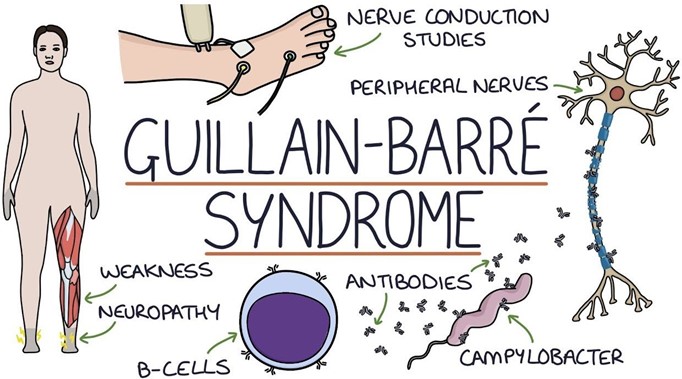While caring for a client with Guillain-Barre syndrome, which finding should the practical nurse (PN) report to the charge nurse?
Irregular heart rate.
Profuse diaphoresis.
Lower leg weakness.
Full facial flushing.
The Correct Answer is A
This is the finding that the PN should report to the charge nurse because it indicates a possible complication of Guillain-Barre syndrome, which is autonomic dysfunction. This can affect the cardiac, respiratory, and gastrointestinal systems and cause life-threatening problems such as arrhythmias, hypotension, or respiratory failure. The PN should monitor the client's vital signs closely and report any abnormal changes.

B. Profuse diaphoresis is not a priority finding and may be related to other factors such as fever, anxiety, or medication side effects.
C. Lower leg weakness is an expected finding in Guillain-Barre syndrome and does not need to be reported unless it progresses rapidly or affects the respiratory muscles.
D. Full facial flushing is not a priority finding and may be related to other factors such as vasodilation, inflammation, or medication side effects.
Nursing Test Bank
Naxlex Comprehensive Predictor Exams
Related Questions
Correct Answer is B
Explanation
The correct answer is choiceB. Culture for sensitive organisms.
Choice A rationale:
C-reactive protein (CRP) levels are indicative of inflammation in the body and can help identify the presence of an infection. However, CRP levels do not provide specific information about the type of organism causing the infection, which is crucial for targeted treatment.
Choice B rationale:
A culture for sensitive organisms is essential in this scenario because it identifies the specific bacteria or other pathogens present in the wound. This information is critical for selecting the appropriate antibiotic therapy to treat the infection effectively.
Choice C rationale:
Serum albumin levels are important for assessing nutritional status and overall health, which can impact wound healing. Low albumin levels can indicate poor nutritional status and delayed wound healing, but they do not provide immediate information about the infection itself.
Choice D rationale:
Serum blood glucose (BG) levels are crucial for managing diabetes and can affect wound healing. High blood glucose levels can impair the immune response and slow down the healing process. However, like CRP, BG levels do not provide specific information about the type of infection present in the wound.
Correct Answer is B
Explanation
The Herpes zoster (shingles) vaccination is recommended for adults aged 60 years and older, regardless of whether they have had shingles or chicken pox before. The vaccine can reduce the risk of developing shingles and its complications, such as postherpetic neuralgia.
The other options are not correct because:
A. The vaccine is useful even if the person has had a case of shingles before, as shingles can recur in some people. The vaccine can prevent or reduce the severity of future episodes.
C. The person needs to get this vaccination even if they have had chickenpox, as shingles are caused by the reactivation of the same virus that causes chickenpox (varicella-zoster virus). The vaccine can boost the immunity against the virus and prevent it from reactivating.
D. The vaccination does not minimize outbreaks of cold sores, as cold sores are caused by a different virus (herpes simplex virus). The vaccine has no effect on this virus or its symptoms.
Whether you are a student looking to ace your exams or a practicing nurse seeking to enhance your expertise , our nursing education contents will empower you with the confidence and competence to make a difference in the lives of patients and become a respected leader in the healthcare field.
Visit Naxlex, invest in your future and unlock endless possibilities with our unparalleled nursing education contents today
Report Wrong Answer on the Current Question
Do you disagree with the answer? If yes, what is your expected answer? Explain.
Kindly be descriptive with the issue you are facing.
